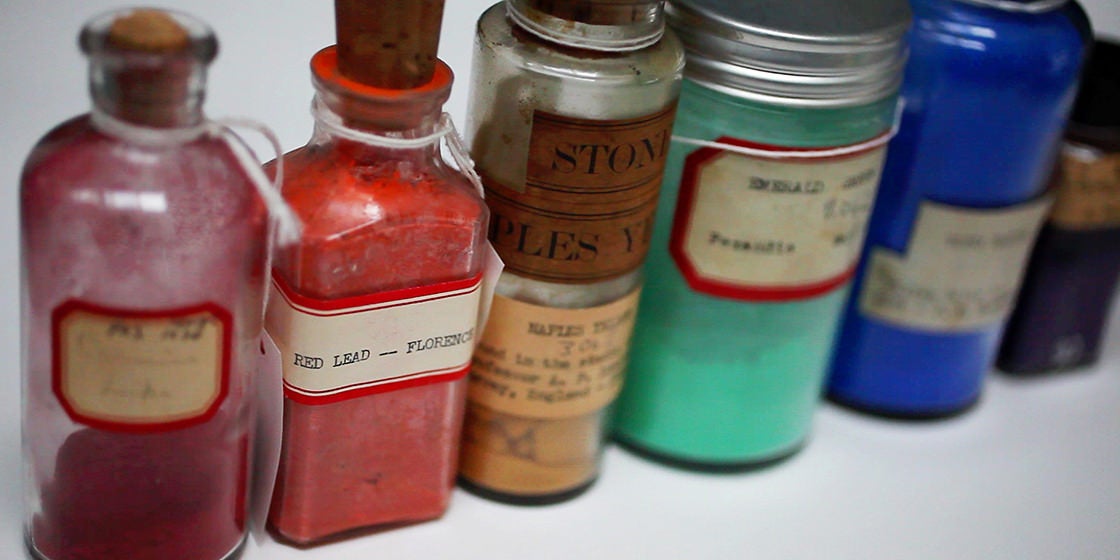Blackest black
New to pigments collection, a dark marvel of art and science
More like this
Emmanuelle Alt, the editor in chief of Vogue Paris, is said to have quipped: “I’ll stop wearing black when they invent a darker color.”
The Frenchwoman may want to schedule a Harvard visit.
The British company Surrey NanoSystems has developed what it calls “the darkest man-made substance,” a material known as Vantablack, a sample of which is now part of the collections at the Harvard Art Museums. The color is located in the Straus Center for Conservation and Technical Studies’ Forbes Pigments Collection, an assortment of about 2,500 synthetic and organic pigments that helps conservators, curators, and students study and safeguard artworks.
Just how black can black get? Vantablack absorbs close to 100 percent of light. The material is less a traditional pigment — a powdery substance typically combined with a binding medium and spread on canvas — than the product of a complicated scientific process involving carbon nanotubes cultivated on the surface of an object.
“It’s not a powder that’s mixed with something and then applied … it’s grown there in situ,” said Straus Center Director Narayan Khandekar, Harvard’s resident pigment expert. “You have small round tubes that grow outwards from the surface. The light goes into those tubes, bounces around, and then is transferred into heat energy, which is then dissipated. And so the surface is more than 99.9 percent light-absorbing.”
The museums’ sample, applied to a piece of crinkled aluminum and encased in a see-through box, is a wonder of extreme darkness. On the edges and back of the sample, the silver aluminum is clearly buckled and creased, but the Vantablack section appears entirely smooth.
“It’s a great resource, to show people how black black can be,” said Khandekar.
Not much is known about the actual “growing” process for Vantablack. It’s a secret developers are determined to keep under wraps. When Khandekar first contacted the company about obtaining a sample, representatives declined. Khandekar persisted, and as interest in the pigment broadened, the company eventually made Vantablack samples available for “educational purposes.”
One lucky artist has unlimited access to the color. The sculptor Anish Kapoor negotiated exclusive artistic rights to Vantablack S-VIS, a spray form said to be the world’s blackest paint. The velvety surface it produces “is something that fits right in with Kapoor’s artistic practice,” said Khandekar. “So I can see why he was drawn to it.”
Many artists have protested the Kapoor deal, and Khandekar acknowledged that it’s atypical for an artist to have sole right to a particular color. “It is unusual,” he said, “but this is an unusual pigment.”





